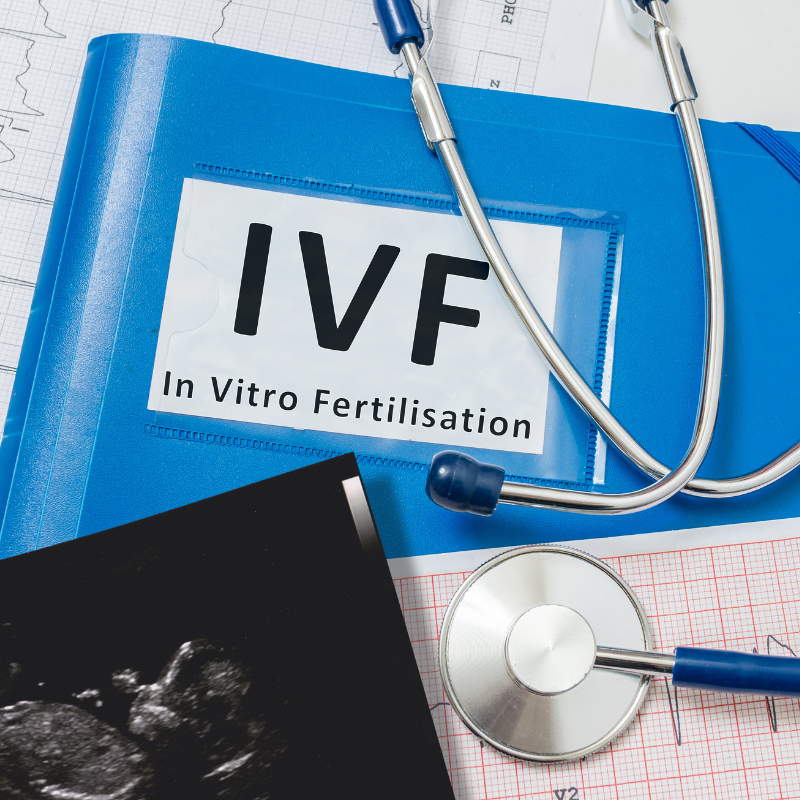Table of Contents
In vitro fertilization (IVF) is a widely used fertility treatment that has helped millions of people around the world achieve their dream of becoming parents. While it is a powerful tool in overcoming infertility, many individuals are understandably concerned about the physical discomfort or pain that may accompany the process. If you’re considering IVF, it’s natural to wonder: Is IVF painful?
In this article, we’ll explore the different stages of IVF, the sensations and potential discomfort you might experience, and how to manage them. Understanding the process and what to expect can help alleviate fear, making the IVF journey more manageable and less daunting.
Understanding the IVF Process
Before discussing the sensations you might experience, it’s essential to understand the basic stages of IVF. The process typically includes the following steps:
- Ovarian Stimulation: Hormonal medications are used to stimulate the ovaries to produce multiple eggs instead of the single egg released during a normal menstrual cycle.
- Egg Retrieval: Once the eggs are mature, a procedure is performed to collect them from the ovaries.
- Fertilization: The retrieved eggs are combined with sperm in a lab to create embryos.
- Embryo Transfer: After a few days, one or more embryos are transferred into the uterus in hopes of achieving pregnancy.
Each stage of IVF comes with its own set of sensations and potential discomforts. Let’s break them down and discuss what you can expect during each phase.

Stage 1: Ovarian Stimulation – What to Expect
The first step in the IVF process involves stimulating the ovaries with fertility medications to encourage the production of multiple eggs. These medications, typically in the form of injectable hormones, must be taken daily for about 10–14 days.
Is it painful?
Administering hormone injections can cause mild discomfort, but the actual process of injecting yourself is usually not described as painful. Many people report feeling a brief pinch or sting when the needle is inserted, similar to any other injection. The discomfort may vary depending on your sensitivity to needles, but most find it manageable.
Some individuals experience side effects from the fertility medications, such as bloating, mood swings, headaches, or fatigue, which can add to the overall discomfort. As the ovaries become stimulated, you may feel a sense of fullness or mild cramping, similar to the sensations experienced before or during menstruation. However, these symptoms are typically mild and temporary.
Pain management tip: If you’re nervous about injections, your healthcare provider can give you tips on how to administer them with minimal discomfort. Icing the injection site beforehand or using numbing creams can also help reduce pain.
Stage 2: Egg Retrieval – What to Expect
Once the eggs have matured, they are collected in a minor surgical procedure known as egg retrieval. This step usually takes place under mild sedation or anesthesia, so you won’t be awake or feel any pain during the procedure itself.
Is it painful?
Since the procedure is done under anesthesia, you won’t feel anything while the eggs are being retrieved. However, after the anesthesia wears off, you may experience some cramping, bloating, or mild discomfort, similar to menstrual cramps. These symptoms are usually short-lived and can be managed with over-the-counter pain medications like ibuprofen or acetaminophen.
Most people are able to resume normal activities within a day or two following egg retrieval, though it’s recommended to take it easy and rest as much as possible.
Pain management tip: Drinking plenty of fluids and avoiding strenuous activities for a couple of days after egg retrieval can help ease discomfort. If your symptoms worsen or persist, it’s important to contact your healthcare provider.
Stage 3: Fertilization and Embryo Development – What to Expect
Once the eggs have been retrieved, they are fertilized in a laboratory setting. During this stage, you won’t experience any physical sensations since it occurs outside your body. However, waiting for the results can be an emotional challenge as you anticipate how many eggs were successfully fertilized and how well the embryos develop.
Though this stage isn’t physically painful, it can be mentally and emotionally taxing. Many individuals report feeling anxious during this time, so it’s important to have a strong support system in place.
Emotional support tip: Consider talking to a counselor, joining a support group, or leaning on friends and family to help manage the emotional stress that often accompanies this stage.
Stage 4: Embryo Transfer – What to Expect
The final step of IVF involves transferring one or more embryos into your uterus. This procedure is relatively simple and is performed in a doctor’s office without the need for anesthesia, although a mild sedative may be offered to help you relax.
Is it painful?
Most individuals report little to no pain during the embryo transfer. It’s often compared to a pap smear, where a speculum is inserted into the vagina, and a thin catheter is used to place the embryo into the uterus. You may feel mild cramping or pressure, but it’s generally considered to be a quick and painless procedure.
After the transfer, you’ll likely be instructed to rest for a short period before resuming normal activities. Some people experience light spotting or mild cramping in the days following the transfer, but these symptoms are usually minimal.
Pain management tip: Relaxation techniques like deep breathing or guided meditation can help ease any anxiety or discomfort during the procedure. Resting afterward and staying hydrated can also aid in recovery.
Overall Pain Level in IVF
While IVF involves a series of procedures, most people find the physical pain to be mild and manageable. Discomfort is often more related to side effects from hormone treatments and the emotional rollercoaster of the process rather than the procedures themselves.
However, it’s important to remember that everyone’s pain tolerance is different, and what feels mild for one person may feel more intense for another. If you’re concerned about pain or discomfort during IVF, don’t hesitate to speak with your healthcare provider. They can offer personalized advice and support to make the process as comfortable as possible.
Managing Emotional and Mental Discomfort During IVF
The emotional toll of IVF can be just as challenging, if not more so, than the physical discomfort. Many people experience feelings of stress, anxiety, and even depression during the process, especially if they’ve been dealing with infertility for a long time.
It’s important to take care of your mental health during this journey. Lean on your partner, family, and friends for support, and consider seeking professional help from a therapist or counselor who specializes in fertility issues. Engaging in self-care practices like yoga, meditation, or journaling can also help reduce stress and keep you grounded.
Self-care tip: Remember that it’s okay to ask for help and to take time for yourself during the IVF process. Whether it’s through therapy, support groups, or simply talking to a friend, emotional support is essential for maintaining a positive outlook.

Conclusion: Is IVF Painful?
IVF can involve some discomfort, particularly during hormone injections and the egg retrieval process, but the overall pain level is generally mild and manageable. Most individuals report that the physical pain is outweighed by the emotional and mental challenges of the process.
If you’re considering IVF, it’s important to remember that everyone’s experience is unique, and the support of a skilled medical team can help make the process smoother. By being informed about what to expect and taking steps to manage both physical and emotional discomfort, you can navigate the IVF journey with confidence. Ultimately, the potential reward of achieving pregnancy can make the temporary discomfort worth it, offering hope to those who dream of becoming parents.

